E-Archive
Cover Page
in Vol. 17 - January Issue - Year 2016
25 Years Of Innovations - Challenging The Digital Future
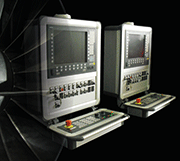
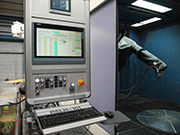
TBM control of a roxor robot-blasting-machine
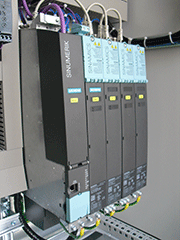
Retrofit of a Schlick shotpeening machine with Sinumerik CNC
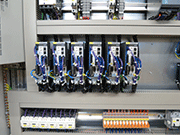
Retrofit of dosing drives on a Baiker machine
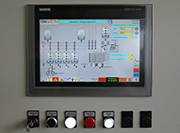
Retrofit of a Baiker media storage and belt sorting
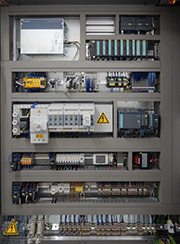
TBM control cabinet with Siemens-IPC and PLC
TBM Automation AG, celebrating its 25th anniversary, has created many types of technology during this period. The Swiss-based company is one of the cutting edge innovators in the field of shot peening and blasting controls.
Taking a look back to the beginning of the 1990s, TBM developed the first worldwide visualisation system on a Baiker shot peening machine for MTU Munich in 1993. Since then TBM has been developing its leading media flow metering and controls which are part of today's core business. Starting with Schleicher and Siemens CNC controls, more and more machines have been equipped with robots instead of CNC controls.
In 2011 TBM also began its partnership with Roxor Strahltechnik and acquired Anvil Developments with its leading Non-Fe media flow sensors. In addition, many innovations e.g. Q-Com (statistical databased maintenance info-system, 2001) and direct drive based rotary heads for inside peening (in cooperation with Roxor Strahltechnik, 2011) have been developed. Since then, almost 200 shot peening, dry and wet blasting machines all over the world have been equipped with TBM controls. All of them continue to be supported and retrofitted on demand.
Meeting the customer demands in areas such as gaining up time, energy efficiency, integration of cameras, shot-speed measurement, RF-ID Systems and automated calibration units are daily business. Moreover, although there are higher demands and complexities; TBM still has an "as simple as possible" easy-to-use HMI. Silvester Tribus, CEO of TBM, has taken this 25-year milestone as an inducement to have a look forward into the digital future of shot peening and blasting. What will the future of automation look like?
Different Names for the Same Targets
Everyday there are many articles in the press about IoT (Internet of Things), I40 (Industry 4.0), digital factory, Made in China 2025, Catapult Programme, Vanguard Initiative etc. For example, a Google search of "industry 4.0" gives 165 million results. However, if you delve deeper, you will find that a lot of different types of technology called I40 or IoT are more than 10 years old. They have just been given a new name that matches today's marketing. The main reason is because there are still no required standards for the digital industry. Several organisations like VDI, ZVEI and OPC in different countries are working on that task (e.g. the Reference-Model Industry 4.0 "RAMI4.0" in Germany). The target is to get system architecture and transparent meta models for the "digital factory". This will result in adding value due to horizontal and vertical integration of the production by network systems (e.g. by cloud services). Open communication standards e.g. IO-link (IEC 61131-9) are the first steps towards meeting these targets.
Is it just a Hype Phase or a Revolution?
The author's personal opinion is that it is not a question of whether the digital factory will prevail - it's just a question of, "when will it happen?" It will be an ongoing process of digitalization being implemented step-by-step now and in the next ten years. That is to say, it will be more an evolution then a revolution. Therefore, there is no need to make one big decision from it. Some of the main drivers in this process are: the shortening of innovation cycles and an increase in flexibility and efficiency. Despite this, not all of the new types of technology in this field will survive. It will depend on the real customer value that they add.
For example, ITP in Spain (owned by the engineering group SENER and Rolls-Royce) recognized very early the digital factory opportunities and set up a leading PLM (Product Lifecycle Management) and MES (Manufacturing Execution System) between 2011-2015. This showed real vision and ambition.
Advantages and Concerns
The questions that many of us ask about cloud systems and the digital factory are: Why should confidential data be stored in the cloud? Do the data need to be stored online? What benefits will the organization get out of a digital factory? Below are a few exemplary answers:
Shorten Time to Market by Simulating the Reality
The usage of simulation-tools, offline-programming and working with digital twins allows shorter innovation cycles on more and more complex products (e.g. like machining and shot peening of BLISKs - blade integrated disks). Moreover, the fact that additive manufacturing will substitute classic machining in several fields will affect the shot peening workshops of MRO companies and departments. Instead of shipping spare parts around the planet, they can be printed on site. Many of these parts will need surface treatment like shot peening afterwards. As a result, this will increase the demand for universal shot peening and blasting machines that can produce flexibly with different media and a wide range of process-parameters for batch size one. Furthermore, an interchangeability of the robot-programs between different brands is also required. This can be obtained e.g. by using offline programming software like FAMOS.
Optimizing the Intralogistics with AGV's
AGV's - Automatic guided vehicles are driverless forklift trucks, transporters and other material-handling vehicles. Having the right parts at the right time in the right place saves labour costs and increases productivity. In addition, keeping material automatically in stock as long as it is not needed for the further production process saves space in the production area. Using AGV's also lowers the risk of damage during transportation compared to manual transportation. As everybody knows, aerospace industry parts in particular are quite expensive. For example, Lufthansa Technik AG in Hamburg has recently installed such an AGV system in its aircraft MRO department.
In the intralogistics field, there is still great potential. TBM is a long-term distributor and partner of Kollmorgen, which provides "NDC solutions" controls, hard- and software solutions for AGV's, and optimization of the intralogistics processes. The controls can be added to existing vehicles as well as to new designs.
From Reacting to Predicting Maintenance
Collecting and analysing production and device data will allow more precise predictive maintenance. For example, Siemens has developed a condition monitoring system (SIPLUS CMS) that analyses vibration signals to discover any early signs of gearbox damage. Therefore, the spare parts can be ordered before the device fails. This will lead to a significant increase in machine availability. As a certified solution partner of Siemens Automation & Drives, TBM relies on its technology.
Using cloud services will also change the maintenance business model of the machine's OEMs. It will allow a central management of the automation software by using a private cloud of the automation OEM (e.g. version management and distribution of software releases and licenses). This virtualisation means it will be able to be supported from anywhere in the world - independent of which software is available locally on site. Furthermore, the on-site service engineer will instantly receive all the relevant drawings and manuals for a repair on his mobile device, e.g. a rugged industrial tablet-PC.
Security Concerns - Connected to the Cloud
The fact is, a digital factory is only possible with a cloud. It is just a question of whether it is a private cloud (self-maintained on an own in-house server) or a public cloud from a service-provider. Machine safety and energy efficiency have been the dominant topics in the last few years and from now on, security will be one of the main priorities. Security will definitely be one of the key factors in the acceptance of cloud-based ecosystems in the aerospace and automotive industries.
Since the Stuxnet attack, all of us know that there are serious security threats to automation equipment. The biggest concerns are the loss or theft of sensitive data in addition to viral infections causing down times or damaging machines and products. Nevertheless, internet connection is not the only threat. A device can also be infected by a USB stick. For example, Stuxnet has spread all over the internet, but the PLC of the nuclear plant in Iran was infected by USB/LAN during maintenance by a supplier.
Therefore, a fully integrated security concept is needed, beginning with physical access protection to online security (like "defence in depth" in the military). Missing one piece of the jigsaw is like having a heavily locked front door but leaving the adjacent window wide open. The big difference between machine-safety and security is that security cases (threats) are not static like safety. They change during a machine's lifetime. This means that it will be an ongoing task for the operators as well as for the OEM's. In any case, prevention only strategies will not be sufficient. Two further security questions are: Will it get recognized if a system has been hacked? Is there a "Plan B" if it has happened? Today's hackers are no longer just computer nerds; they are teamworking criminal organisations or even foreign secret services.
Leading global players like Intel, Microsoft and Siemens are collaborating to establish "Hardened systems". For example, Intel has implemented a data exchange layer (DXL), which allows devices to share events in the network (similar to RSS feeds). This allows device-device communication and collaboration. Approved secure components (like rugged switches, firewalls, PLC-CPU's, IPC's) can be identified by their "Achilles Certification".
Other Challenges
The vertical collection of production and machine-health data means handling of "big data". Nevertheless, it does not make sense just to collect terabytes of data in a data graveyard in the cloud. The challenge will be to sift out the relevant valuable information. Similarly, it is known for a decade in the IT industry that "big data" is handled in data-warehouses using "data pumps" to aggregate the required counts for the controlling and MIS systems. Joining the data of several machines will also enable a fault to be statistically forecast. The development of intelligent algorithms based on service-oriented architecture (SOA) will be one of the main tasks in this field. The value of the information will be measured by actuality and relevance. Therefore, the basic laws of the IT world are also valid in the field of automation.
To implement the bespoken requirements will place a demand on a new generation of engineers. Besides specialists, it will need engineers who are familiar with the IT meta-models and mechanisms as well as being skilled in production-, electrical and mechanical engineering. Their profiles will be more interdependent enabling them to have a broad range of knowledge. This is today's challenge for our universities. They will have to develop education programs for "digital factory engineering". This is currently being recognized by several universities; for example, St. Pölten University of Applied Sciences, Austria, has started a bachelor-program in "Smart Engineering of Production Technologies and Processes".
Not all aspects of digital manufacturing could be discussed in this article. There are many fields that could even fill a book. It is definitely going to be an exciting and challenging digital future!
For Information:
TBM Automation AG
Bahnhofstrasse 48
9443 Widnau, Switzerland
Tel. +41.71.7270030
E-mail: mail@tbm.ch
www.peening-controls.ch


























